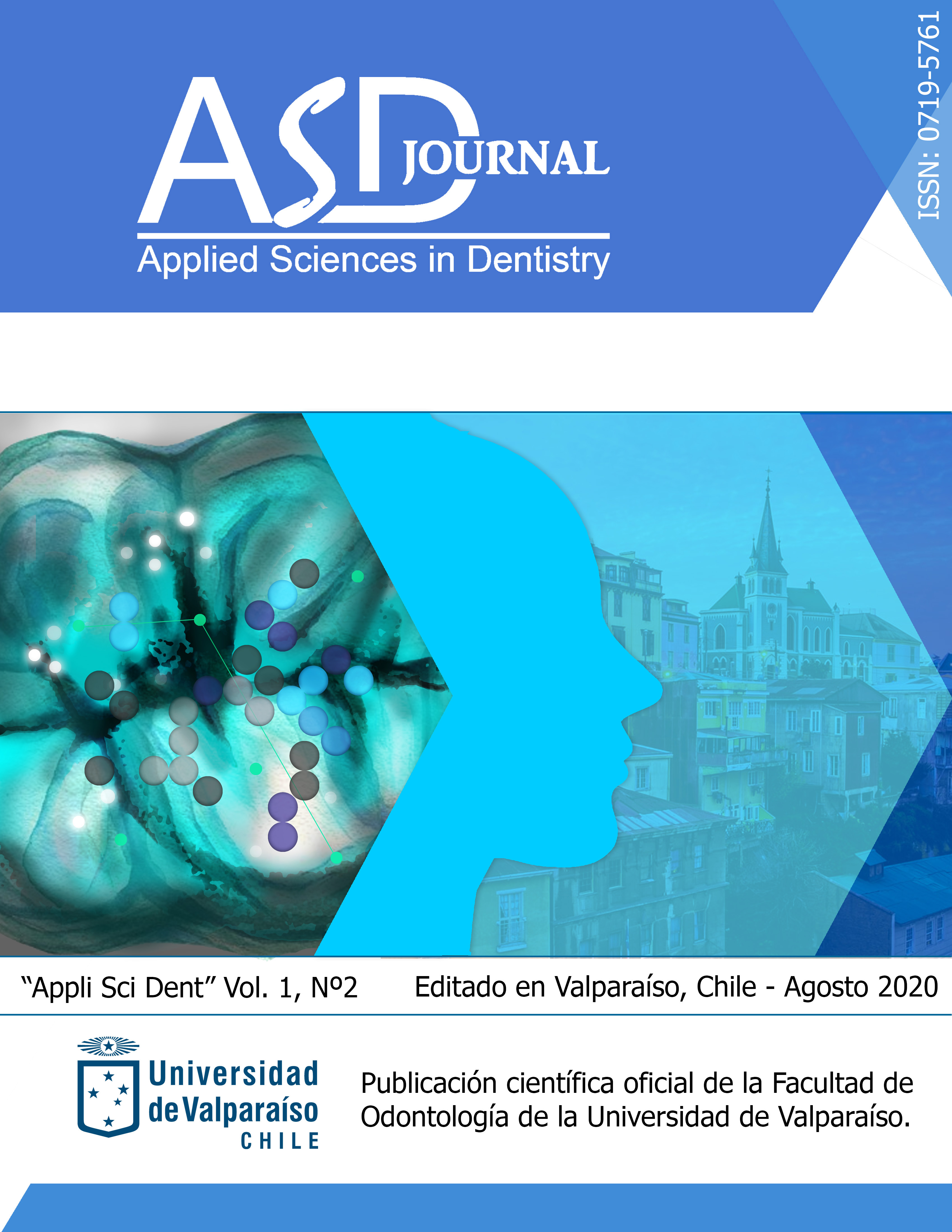VASCULAR AND NERVOUS CHANGES IN DENTAL PULP OF HUMAN TEMPORARY TEETH ASSOCIATED WITH THE PHYSIOLOGICAL ROOT RESORPTION PROCESS
DOI:
https://doi.org/10.22370/asd.2020.1.2.2413Keywords:
Tooth, deciduous, root resorption, wallerian degeneration, blood vessels, fluorescent antibody techniqueAbstract
Objective: To determine vascular and nervous changes during the progression of physiological root resorption, in three stages.
Materials and methods: 21 healthy temporary canines with indication of extraction, conducted on the Faculty of Dentistry of the University of Valparaiso were analyzed. Samples were processed for indirect immunofluorescence using Alexa Fluor 488 goat anti-mouse fluorochromes for Schwann cells (CS); Alexa fluor 555 goat anti-rabbit for endothelium. By confocal microscopy, a subodontoblastic portion, greater than the amelocemental junction, and an apical portion related to the root resorption area were analyzed. They were classified in initial, middle, and advanced stages. To process images, Ez-C1 3.90 and ImageJ programs were employed, and through visual analysis, researchers described pulpal changes.
Results: As the tooth was resorbed, nervous tissue degraded and disorganized with angiogenesis around it during middle stage. The same was observed in the coronal section, but with more predominance in the apical section. As physiological root resorption happened, the vascularity of temporary teeth increased.
Conclusion: As physiological root resorption ensues, simultaneously occurs degradation and disorganization of nervous tissue, along with angiogenesis.
Downloads
Downloads
Published
How to Cite
Issue
Section
License
Authors retain copyright and grant the journal right of first publication with the work simultaneously licensed under a Creative Commons Attribution 4.0 International License that allows others to share the work with an acknowledgment of the work's authorship and initial publication in this journal.
Authors are able to enter into separate, additional contractual arrangements for the non-exclusive distribution of the journal's published version of the work (e.g., post it to an institutional repository, in a journal or publish it in a book), with an acknowledgment of its initial publication in this journal.
Authors are encouraged to post their work online (e.g., in their institutional repositories or on their website) only after publication online.
When uploading, disseminating or repurposing Open Access publications, the journal should be clearly identified as the original source and proper citation information provided. In addition to the Version of Record (final published version), authors should deposit the URL/DOI of their published article in any repository.


